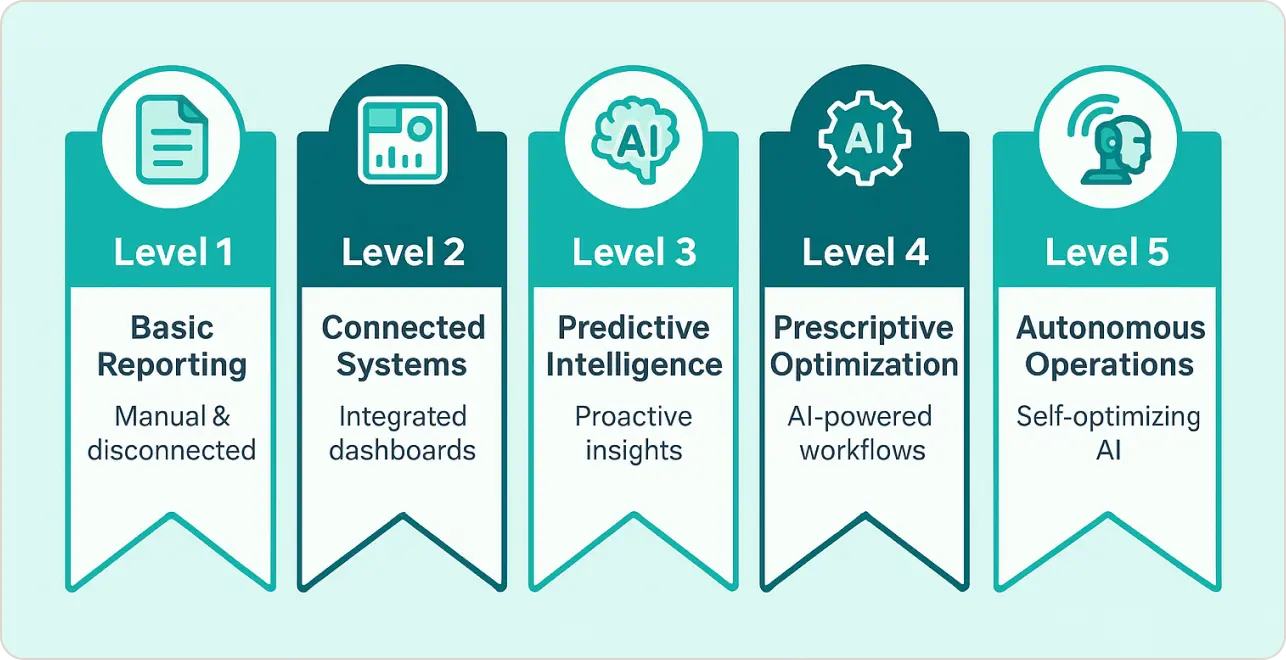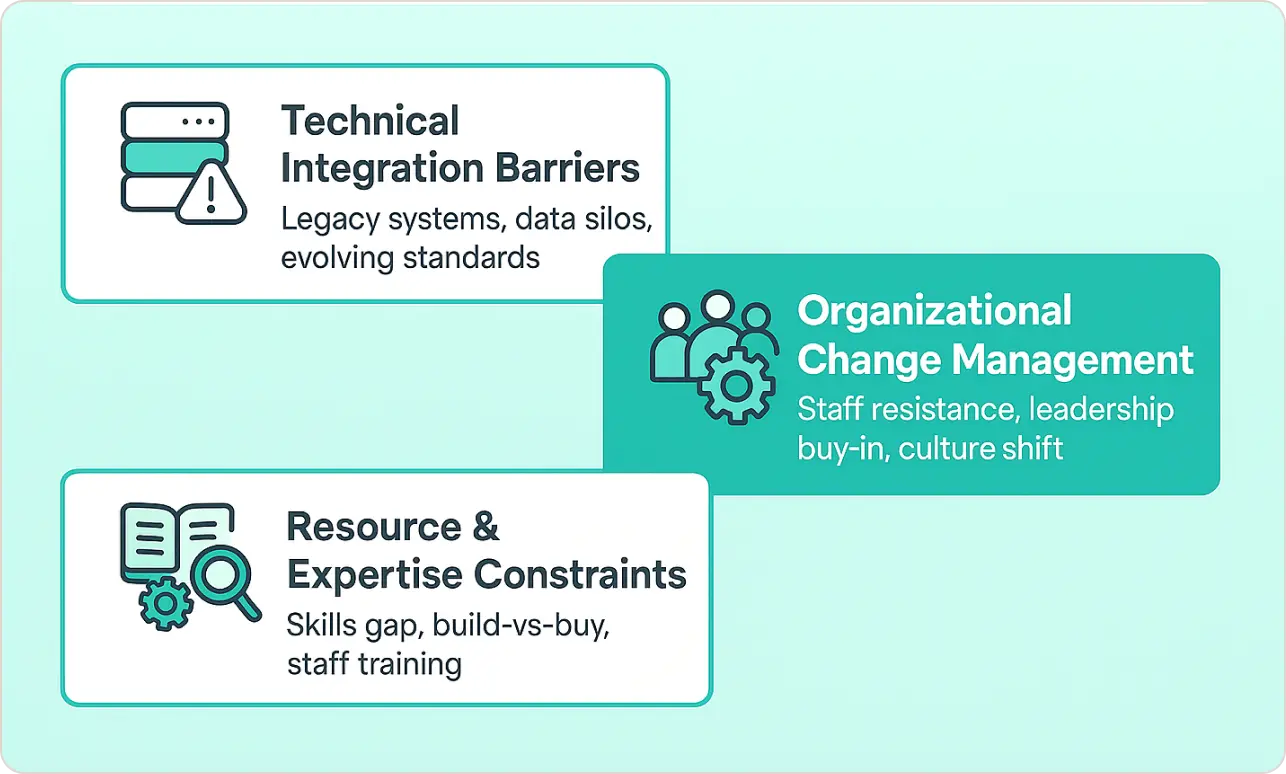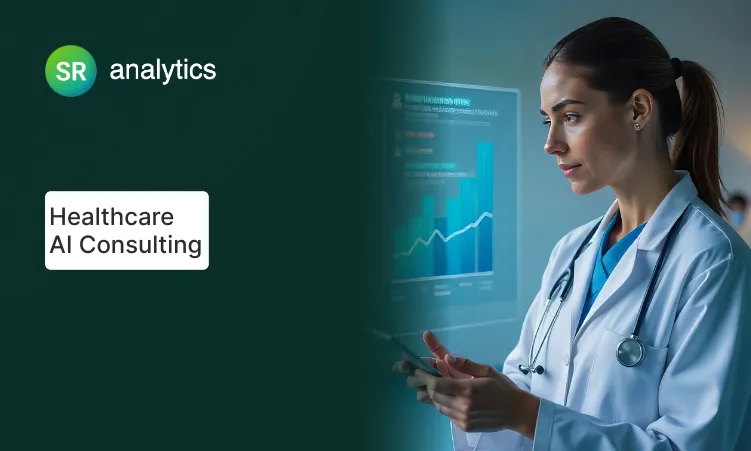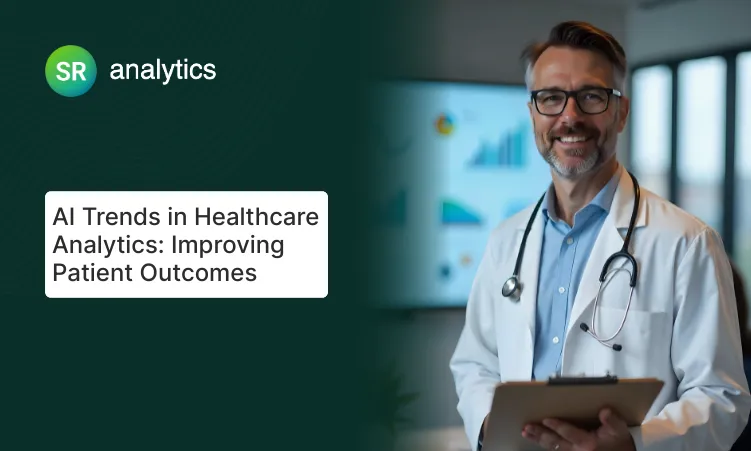Key Highlights:
• Level 1 organizations waste analytics potential
• Maturity models provide structured advancement paths
• Assessment tools identify improvement opportunities
• Specific roadmaps accelerate organizational progress
• Technology stacks vary by maturity level
“Most healthcare systems waste 40% of their data potential daily.”
Healthcare executives consistently ask: “We have tons of data, but how do we know if we’re using it effectively?” The answer lies in understanding where your organization sits on the healthcare analytics maturity spectrum.
After evaluating numerous healthcare systems, I’ve identified five distinct levels within our data analytics maturity model that determine success. Organizations operating at advanced levels achieve substantially higher ROI than those stuck at foundational stages.
This analytics maturity model provides healthcare leaders with diagnostic tools to evaluate current capabilities. Unlike generic transformation advice, this maturity framework delivers specific, actionable guidance based on your organization’s current analytics sophistication.
Understanding Analytics Maturity Models in Healthcare
Healthcare analytics maturity models provide structured frameworks for organizations to assess current capabilities and plan advancement strategies. Unlike generic business frameworks, healthcare-specific models address unique challenges including patient safety and regulatory compliance.
The data analytics maturity model builds on established frameworks while addressing healthcare’s specific requirements. This approach provides clear benchmarking opportunities and realistic advancement timelines.
Why Healthcare Needs Specialized Frameworks
Healthcare organizations face distinct challenges that generic maturity frameworks cannot adequately address. Patient safety requirements, HIPAA compliance, and clinical workflow complexity demand specialized approaches.
According to research from McKinsey’s analytics maturity research, organizations with higher analytics maturity significantly outperform peers across key performance metrics.
Components of Effective Maturity Models
Effective healthcare analytics maturity frameworks include standardized assessment criteria, technology requirement specifications, and implementation roadmaps. These components ensure organizations can accurately evaluate their current position and plan systematic advancement.
The 5-Level Healthcare Analytics Framework

Level 1: Basic Reporting Operations
Most healthcare organizations begin at this foundational level, characterized by manual processes and disconnected systems. These organizations typically possess basic digital tools but lack integration capabilities.
Report generation takes significant time, often requiring manual data extraction and compilation. Clinical staff spend excessive time on documentation rather than patient care activities.
Performance indicators reveal limited real-time visibility into operations. Decision-making relies primarily on historical data rather than current insights.
Organizations at this level require foundational improvements before advancing to more sophisticated capabilities. Investment focuses on establishing basic infrastructure and data governance.
Level 2: Connected Analytics Systems
Organizations at this level have successfully integrated basic systems with analytics capabilities. Real-time dashboards provide operational visibility across departments.
Digital workflows reduce manual tasks while standardized data definitions improve consistency. Clinical staff can access patient information through integrated platforms.
These organizations typically see measurable improvements in operational efficiency. Patient satisfaction often increases through enhanced digital touchpoints.
Investment requirements increase as organizations implement more sophisticated analytics tools. The focus shifts toward predictive capabilities and advanced reporting.
Level 3: Predictive Intelligence Capabilities
Advanced analytics enable these organizations to predict patient outcomes and operational challenges. Machine learning models support both clinical and operational decision-making processes.
Predictive models achieve high accuracy rates for patient risk stratification. Automated alerts help prevent adverse events while optimizing resource utilization.
Organizations demonstrate proactive rather than reactive care management. Population health initiatives become feasible through integrated data platforms.
The return on investment becomes substantial at this level. Organizations typically see significant improvements across multiple performance metrics.
Level 4: Prescriptive Optimization Systems
Elite organizations feature AI-powered systems providing automated recommendations and workflow optimization. These systems represent the pinnacle of achievable analytics maturity for most healthcare organizations.
AI-driven decision support integrates seamlessly into clinical workflows. Automated systems optimize hospital operations with minimal human intervention.
Performance metrics show exceptional results across clinical and operational domains. Patient satisfaction consistently ranks in top performance tiers.
Investment requirements are substantial but generate exceptional returns. Organizations achieve competitive advantages through superior analytics capabilities.
Level 5: Autonomous Healthcare Operations
The most advanced level features fully integrated AI systems making real-time decisions across all platforms. Continuous learning algorithms adapt protocols based on outcomes data.
Current examples exist primarily in specialized departments at leading health systems. These organizations achieve near-complete automation for routine decisions.
Performance indicators demonstrate industry-leading results across all metrics. Predictive accuracy exceeds standard benchmarks for critical outcomes.
Healthcare Analytics Assessment Tool
This assessment helps organizations identify their current analytics maturity model position and advancement opportunities. The evaluation focuses on three critical areas of analytics capability.
Clinical Analytics Assessment
Organizations should evaluate how effectively their systems predict patient deterioration and clinical complications. Advanced systems provide real-time risk scoring with intervention recommendations.
The speed of clinical data access varies significantly across maturity levels. Basic organizations rely on periodic reports while advanced systems provide instant analytics.
Integration with clinical workflows determines practical utility. Successful implementations seamlessly support rather than disrupt clinical processes.
Operational Analytics Evaluation
Resource optimization capabilities distinguish maturity levels clearly. Advanced organizations use predictive models for staffing and supply chain management.
Supply chain analytics range from basic tracking to autonomous optimization systems. Higher maturity levels feature real-time adjustment capabilities.
Financial performance analytics become increasingly sophisticated with advancement. Advanced organizations achieve comprehensive ROI measurement across all initiatives.
Infrastructure Maturity Assessment
Data integration sophistication varies dramatically across maturity levels. Basic organizations struggle with siloed systems requiring manual processes.
Advanced organizations feature AI-powered data management with automated quality control. The most sophisticated systems include self-healing infrastructure capabilities.
Security and compliance frameworks must evolve with increasing analytics sophistication. Advanced systems incorporate privacy-preserving analytics techniques.
Advancement Implementation Strategies
Building Foundational Capabilities
Organizations beginning their analytics maturity model journey must establish fundamental infrastructure. This phase focuses on creating integrated systems and basic governance frameworks.
Priority activities include implementing dashboard platforms and standardizing data definitions. Staff training becomes crucial for successful adoption.
Technology requirements encompass business intelligence platforms and data integration tools. Cloud-based solutions often provide cost-effective scalability.
Success metrics include report generation time reduction and user adoption rates. Organizations typically require several months for foundational improvements.
Developing Predictive Capabilities
The transition to predictive analytics represents a significant advancement requiring machine learning capabilities. Organizations must identify high-value use cases for initial implementation.
Clinical risk stratification models provide excellent starting points for predictive initiatives. These applications demonstrate clear value while building organizational confidence.
Technology requirements expand to include statistical software and clinical data repositories. Integration with existing workflows becomes increasingly important.
Success requires achieving high accuracy rates while maintaining clinical acceptance. Organizations must balance sophistication with practical utility.
Implementing Prescriptive Systems
The highest achievable level for most organizations involves AI-powered decision support and automation. This advancement requires substantial investment and organizational commitment.
Focus areas include automated workflow optimization and personalized treatment recommendations. These capabilities represent true transformation rather than incremental improvement.
Technology architecture becomes increasingly complex requiring specialized expertise. Organizations often benefit from external partnerships during this phase.
Success metrics include automation percentages and efficiency improvements. The most successful implementations achieve top-tier performance across multiple domains.
ROI and Performance Benchmarking
Financial Performance Indicators
Organizations at different maturity levels demonstrate varying financial performance characteristics. Basic organizations typically struggle with thin operating margins and limited efficiency gains.
Intermediate organizations show improved financial metrics through enhanced operational efficiency. Advanced organizations achieve exceptional performance through comprehensive optimization.
Investment requirements scale with maturity level advancement but generate proportionally higher returns. The most sophisticated organizations achieve substantial competitive advantages.
Quality and Safety Outcomes
Patient safety metrics improve consistently with analytics maturity advancement. Basic organizations often struggle with preventable adverse events.
Advanced organizations demonstrate significant reductions in safety incidents through predictive monitoring. The most sophisticated systems achieve industry-leading safety performance.
Clinical quality metrics show similar improvement patterns across maturity levels. Advanced analytics enable proactive rather than reactive quality management.
Technology Architecture Requirements
Different data analytics maturity model levels require specific technology architectures. Gartner’s healthcare analytics research provides guidance on technology selection strategies.
Foundational Technology Stack
Basic maturity levels require business intelligence platforms with healthcare-specific capabilities. Data integration tools must connect core clinical and operational systems.
Cloud-based data warehousing provides scalable storage with cost-effective management. Analytics databases should support both structured and unstructured healthcare data.
Security frameworks must address HIPAA compliance while enabling analytics innovation. Organizations should prioritize platforms with built-in healthcare compliance features.
Advanced Analytics Architecture
Higher maturity levels demand machine learning platforms with healthcare-specific algorithms. Statistical software packages should include specialized healthcare libraries.
Real-time processing capabilities become essential for clinical decision support applications. Integration with electronic health records requires sophisticated API management.
Natural language processing enables analysis of unstructured clinical documentation. These capabilities unlock significant value from previously inaccessible data sources.
AI-Powered System Requirements
The highest maturity levels require custom AI solutions designed specifically for healthcare applications. Workflow integration becomes increasingly complex requiring specialized expertise.
Clinical decision support systems must seamlessly integrate with existing workflows. Advanced visualization tools help clinicians interpret complex analytics outputs effectively.
Autonomous optimization requires sophisticated monitoring and control systems. These implementations demand substantial technical expertise and ongoing management capabilities.
Common Implementation Challenges

Technical Integration Barriers
Healthcare organizations frequently struggle with data integration across multiple disparate systems. Legacy technology often complicates advancement efforts significantly.
Data quality issues affect analytics accuracy and clinical acceptance. Organizations must invest in comprehensive data governance frameworks before advancing.
Interoperability standards continue evolving requiring ongoing adaptation. Successful organizations prioritize flexible architectures supporting future requirements.
Organizational Change Management
Clinical staff resistance represents a significant barrier to analytics adoption. Successful implementations require comprehensive training and engagement strategies.
Leadership commitment becomes crucial for sustained advancement efforts. Organizations need executive sponsors championing analytics initiatives consistently.
Cultural transformation often requires substantial time and persistent effort. The most successful organizations integrate analytics into daily workflows gradually.
According to Deloitte’s transformation research, organizations using structured maturity approaches achieve better outcomes than those implementing ad-hoc solutions.
Resource and Expertise Constraints
Many healthcare organizations lack internal expertise for advanced analytics implementations. Building capabilities requires combining technical skills with clinical knowledge.
Partnership strategies can address expertise gaps while building internal capabilities. Organizations should evaluate build-versus-buy decisions carefully for each advancement phase.
Training existing staff often provides cost-effective capability development. Cross-functional teams combining clinical and technical expertise typically achieve better results.
Strategic Planning and Implementation
Assessment and Goal Setting
Successful advancement begins with honest assessment of current capabilities and organizational readiness. Healthcare leaders should identify specific use cases aligned with strategic priorities.
Goal setting should include measurable success criteria with realistic timelines. Organizations must balance ambition with practical implementation constraints.
Stakeholder engagement becomes crucial for sustained commitment and resources. Success requires buy-in from clinical, technical, and executive leadership teams.
Phased Implementation Approach
Most successful organizations adopt phased implementation strategies rather than comprehensive transformations. Pilot projects provide valuable learning opportunities while demonstrating value.
Each phase should build upon previous achievements while adding new capabilities. This approach minimizes risk while maintaining momentum toward advancement goals.
Success metrics should evolve with each phase reflecting increasing sophistication. Organizations should celebrate achievements while maintaining focus on continued advancement.
According to research from Harvard Business Review’s healthcare analytics research, healthcare organizations using industry-specific frameworks achieve substantially better outcomes than those using generic approaches.
Measuring Success and Continuous Improvement
Performance Monitoring Framework
Organizations should establish comprehensive monitoring systems tracking both technical and clinical outcomes. Key performance indicators must reflect the specific goals of each maturity level.
Regular assessment cycles enable identification of improvement opportunities and performance issues. Successful organizations conduct quarterly reviews of analytics initiatives.
Benchmarking against industry standards provides external validation of progress. Organizations should participate in relevant industry studies and performance comparisons.
Optimization and Advancement Planning
Continuous improvement requires ongoing evaluation of new technologies and methodologies. The healthcare analytics landscape evolves rapidly requiring adaptive strategies.
Organizations should maintain awareness of emerging capabilities while focusing on current implementation success. Premature advancement attempts often result in suboptimal outcomes.
Future planning should consider regulatory changes and industry trends. Successful organizations balance innovation with practical implementation capabilities.
Conclusion
Healthcare analytics maturity models provide structured approaches for organizations seeking to transform data into improved patient outcomes and operational excellence. Organizations advancing through these maturity levels consistently achieve dramatic improvements in safety, quality, and financial performance.
Understanding your current position within the data analytics maturity model enables strategic planning for systematic capability building. Whether beginning from foundational levels or advancing toward sophisticated AI-powered systems, success requires strategic vision and persistent commitment.
This healthcare analytics maturity framework transcends simple technology implementation. It systematically builds capabilities that fundamentally transform care delivery while generating measurable value.
Ready to accelerate your analytics maturity model advancement? Healthcare Data Analytics Consulting provides specialized expertise and proven methodologies helping healthcare organizations progress efficiently through each maturity level.














